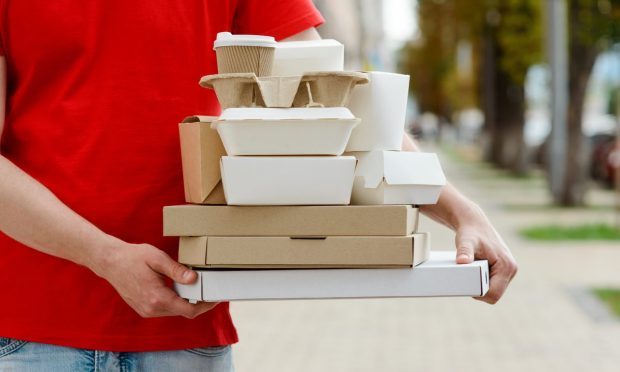Olo Announces Grubhub Partnership, Becomes ‘Common Carrier’

Olo, an on-demand commerce platform for the restaurant industry, is looking to reframe the digital ordering conversation. Rather than framing it as a tug-of-war between restaurants’ own apps and websites and the various third-party aggregators’ apps and websites, the company is looking at how being available on multiple online marketplaces can drive sales for restaurants.
The company announced Tuesday (Aug. 10) that it has added Grubhub as a partner for Rails, the company’s aggregator and channel management solution. The delivery service joined existing Rails partners DoorDash, Uber Eats, Postmates, Seamless, and Caviar. This most recent partnership, Olo CEO Noah Glass told analysts, fulfills Olo’s “promise to serve as a common carrier,” working with all major U.S. aggregators among smaller, regional ones.
“What we’ve seen as we’ve had restaurant brands that are using one aggregator partner and then add a second and a third is that it drives incremental traffic to those restaurant locations,” said Glass. “We think that there’s an opportunity for restaurants to drive more transactions through Grubhub, in addition to what they’re already doing through direct channels and through indirect channels.”
In the second quarter of 2021, the company’s revenue increased 48 percent year over year to $35.9 million. During the quarter, Olo began powering Thighstop, Wingstop’s thigh-centric virtual brand, which made headlines in June as a creative response to nationwide wing shortages.
Read more: Wingstop’s New Virtual Brand ‘Thighstop’ Turns Chicken Shortage Into Opportunity
As Glass told Karen Webster in an interview in May, virtual brands such as Thighstop and the others on Olo’s platform allow the company to get closer to its goal of capturing a greater percentage of total restaurant orders.
“There’s so much for us to go and penetrate beyond where we are,” he said. “We’re not even at 1 percent, and these virtual brands that are inherently 100 percent digital have sped the path toward that ultimate ambition of touching every transaction, because they’re 100 percent digital, 100 percent delivery.”
See also: Olo’s Noah Glass On Powering The $1.6 Trillion ‘Eats’ Ecosystem
Solutions such as those Olo provides are essential, given that off-premises ordering options will likely be even more critical to restaurants’ future success than on-premises options. PYMNTS’ study, The Bring-It-To-Me Economy: How Online Marketplaces And Aggregators Drive Omnichannel Commerce, created in collaboration with Carat by Fiserv, notes that two-thirds of consumers are now ordering restaurant meals to be eaten at home, and that they are 31 percent more likely to order from restaurants for off-premises consumption than on-premises.
Additionally, the study notes that 48 percent of consumers are ordering more from restaurants’ websites to have their food delivered than they were before the pandemic, and 46 percent are ordering more for pickup from these websites than before the pandemic. These data suggest that provide a seamless, straightforward online ordering experience will be critical for restaurants in months and years ahead.
You may also like: Olo CEO On The Path To IPO And Building A Restaurant Network
Looking ahead, the company is continuing to beta test and pilot its Olo pay point of service (POS) system and is looking into adding catering capabilities. The company also finalized its Serve app, a white-label mobile ordering tool that accompanies its existing desktop website counterpart.
“Where we see it as an opportunity for low and incremental revenue is in improving the consumer experience of placing your order or cutting down on the time to place the order, such that basket rate conversion increases, the transaction volume increases,” said Glass. “That’s good for the consumer, good for the brand, but also good for Olo with our transactional SaaS model in the form of additional transactions and transactional revenue.”
